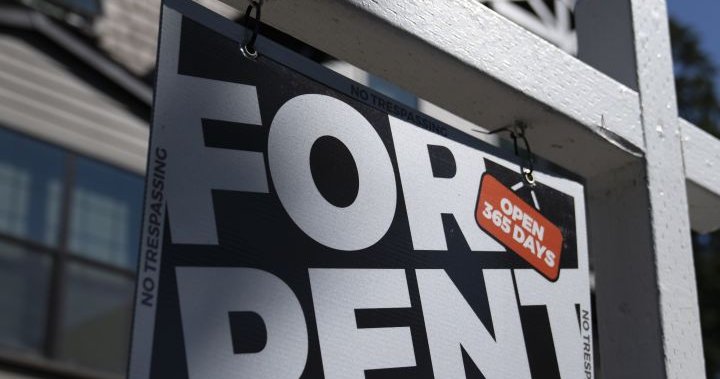Rent increases in smaller Canadian markets outweigh declines in big cities in August: report

A new report says August rental rates fell in some of Canada’s largest and priciest markets to continue a months-long trend, while prices rose in smaller markets.
The report from Rentals.ca and Urbanation finds the average Vancouver rental rate was down six per cent from last year to $3,116 for the ninth straight month of declines, while Toronto rents fell seven per cent to $2,697 for the seventh month of retreat.
Rents were also down slightly in Ottawa, Montreal, and for the first time since February 2021 in Calgary.

In contrast, numerous other cities have seen double-digit increases, including a 22 per cent jump in Quebec City to $1,705, an 18 per cent jump in Regina to $1,418 and a 15 per cent increase in Gatineau, Que., to $2,054.
The increases left all provinces outside of Ontario and British Columbia with rising rates.

Get weekly money news
Get expert insights, Q&A on markets, housing, inflation, and personal finance information delivered to you every Saturday.
Overall, rising rents in smaller markets outweighed the reductions in the biggest cities to leave asking rents in August up 3.3 per cent from last year to $2,187.
However, the increase was the slowest annual pace in almost three years, decreasing sharply from growth of seven per cent in June and 9.3 per cent in May, the report said.
“The moderation in rent increases can be attributed to apartment completions this year reaching their highest total in decades, as well as a recent slowdown in population growth and a softening labour market.”
The average rental rate is also down slightly from July when it hit $2,201, but overall rates have seen little change month-to-month recently.
Rates are up sharply from pandemic lows when they averaged below $1,700, while pre-pandemic, rates were under $1,900.
The federal government has been rolling out some measures to try and tamp down on rent increases, including a cap on international student enrolments and aiming to overall reduce the number of temporary residents, while also rolling out more funding to build more rental supply.
Construction of new rental options however have been hampered by high interest rates and rising construction costs.

© 2024 The Canadian Press








